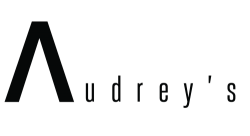The Ultimate Guide to HVAC Financing: How to Afford Your New AC System
Installing a new HVAC system is a major investment for any homeowner. With costs ranging from $5,000 to over $20,000, many people need financing options to afford this essential home upgrade. This comprehensive guide will explore everything you need to know about HVAC financing and AC financing to help you make the best decision for your home and budget.
Why Consider HVAC Financing?

There are several reasons why financing your new HVAC system can be a smart choice:
- Spread out the cost over time with manageable monthly payments
- Get a more efficient system now to start saving on energy bills immediately
- Replace an aging, unreliable system before it breaks down completely
- Take advantage of current rebates and tax incentives
- Improve your home’s comfort and value
According to ENERGY STAR, replacing an old HVAC system with a new high-efficiency model can reduce your heating and cooling costs by up to 20%. Financing allows you to start enjoying those savings right away.
HVAC Financing Options
There are several ways to finance your new HVAC system:
1. HVAC Company Financing
Many HVAC contractors offer their own financing programs, often through partnerships with banks or credit unions. These can be convenient “one-stop-shop” options.
Pros:
- Streamlined application process
- May offer promotional rates like 0% APR for 12-18 months
- Can finance equipment and installation together
Cons:
- Interest rates may be higher after promotional period ends
- May require excellent credit to qualify for best rates
2. Personal Loans
Unsecured personal loans from banks, credit unions, or online lenders can be used for HVAC financing.
Pros:
- Fixed interest rates and repayment terms
- No collateral required
- Can borrow exactly what you need
Cons:
- Interest rates may be higher than secured loans
- May have origination fees
- Typically require good to excellent credit
3. Home Equity Loans or Lines of Credit
If you have equity in your home, you may be able to borrow against it to finance your HVAC system.
Pros:
- Lower interest rates than unsecured loans
- Interest may be tax-deductible
- Longer repayment terms available
Cons:
- Uses your home as collateral
- Closing costs and fees may apply
- Approval process can take longer
4. FHA Title I Home Improvement Loans
These government-backed loans are specifically for home improvements, including HVAC systems.
Pros:
- Available for borrowers with lower credit scores
- No home equity required
- Fixed interest rates
Cons:
- Loan amounts limited to $25,000 for single-family homes
- May have higher interest rates than other options
- Not all lenders offer these loans
Factors to Consider When Choosing HVAC Financing
When evaluating your AC financing options, keep these key factors in mind:
Interest Rates
The interest rate will have a big impact on the total cost of your HVAC financing. Compare APRs (Annual Percentage Rates) across different options. Be wary of low introductory rates that increase significantly after a promotional period.
Loan Terms
Consider how long you’ll be making payments. Shorter terms mean higher monthly payments but less interest paid overall. Longer terms have lower monthly payments but cost more in total interest.
Fees
Look out for origination fees, closing costs, and prepayment penalties. These can add significantly to the cost of your loan.
Credit Requirements
Some financing options are only available to borrowers with excellent credit. Know your credit score and choose an option you’re likely to qualify for.
Collateral
Secured loans that use your home as collateral may offer better rates, but you risk foreclosure if you default. Carefully consider if you’re comfortable with this arrangement.
Tips for Getting the Best HVAC Financing Deal
Follow these tips to secure the most favorable AC financing terms:
- Shop around: Get quotes from multiple HVAC companies and lenders to compare offers.
- Check your credit report: Review for errors and take steps to improve your score if needed.
- Make a down payment: If possible, put some money down to reduce the amount you need to finance.
- Look for rebates and incentives: Take advantage of manufacturer rebates, utility company incentives, and tax credits to lower your total cost.
- Negotiate: Don’t be afraid to ask for better terms, especially if you have multiple offers.
According to ENERGY STAR, you may be eligible for federal tax credits of up to $600 for qualifying high-efficiency air conditioners and up to $2,000 for qualifying heat pumps installed through 2032.
Understanding HVAC Financing Terms
When reviewing financing offers, you may encounter these common terms:
| Term | Definition |
|---|---|
| APR | Annual Percentage Rate – the yearly cost of borrowing, including interest and fees |
| Fixed Rate | An interest rate that remains the same for the life of the loan |
| Variable Rate | An interest rate that can fluctuate based on market conditions |
| Secured Loan | A loan backed by collateral, such as your home |
| Unsecured Loan | A loan not backed by collateral |
| Term | The length of time you have to repay the loan |
Calculating the True Cost of HVAC Financing
To understand the full cost of your AC financing, consider these factors:
- Purchase price of the HVAC system
- Installation costs
- Total interest paid over the life of the loan
- Any fees associated with the financing
- Potential energy savings from a more efficient system
Use an online loan calculator to compare different scenarios and see how factors like interest rate and loan term affect your total cost.
HVAC Financing for Less-Than-Perfect Credit
If your credit score isn’t ideal, you may still have options for HVAC financing:
- FHA Title I loans: As mentioned earlier, these have more lenient credit requirements.
- Secured loans: Using collateral may help you qualify for better rates.
- Co-signers: Having someone with better credit co-sign your loan can improve your chances of approval.
- Rent-to-own programs: Some companies offer these options, but be cautious of high overall costs.
Alternatives to Traditional HVAC Financing
If traditional financing isn’t right for you, consider these alternatives:
- Save up and pay cash: While this takes longer, it avoids interest charges.
- 0% APR credit cards: If you can pay off the balance during the promotional period, this can be a low-cost option.
- Government assistance programs: Some states and localities offer programs to help low-income homeowners with energy-efficient upgrades.
- Lease-to-own programs: These can be an option if you can’t qualify for traditional financing, but carefully review the terms.
Making the Most of Your HVAC Financing
Once you’ve secured your AC financing, follow these tips to maximize your investment:
- Choose a high-efficiency system to maximize energy savings
- Ensure proper installation by a qualified HVAC professional
- Keep up with regular maintenance to extend the life of your system
- Consider a programmable or smart thermostat to further reduce energy costs
- Make extra payments when possible to pay off your loan faster and reduce total interest
Conclusion: Making an Informed HVAC Financing Decision
HVAC financing and AC financing can make a new, efficient heating and cooling system accessible for many homeowners. By carefully considering your options, comparing offers, and understanding the terms, you can find a financing solution that fits your budget and helps you enjoy improved comfort and energy efficiency in your home.
Remember to look beyond just the monthly payment and consider the total cost of ownership, including potential energy savings. With the right approach, HVAC financing can be a smart investment in your home’s comfort and value.
- Loans For Bad Credit
- 1K Personal Loan
- 1200 Personal Loan
- 2K Personal Loan
- 10K Personal Loans
- 3K Personal Loan
- 1500 Personal Loans
- 5K Personal Loan
- 8K Personal Loan
- 7K Personal Loan
- 4K Personal Loan
- 20K Personal Loan
- 25K Personal Loan
- 2500 Personal Loans
- 50K Personal Loan
- 6K Personal Loan
- 3500 Personal Loans Good Bad Credit
- 15K Personal Loan
- 30K Personal Loan
- 100K Personal Loan
- 550 Credit Score Personal Loan
- 520 Credit Score Personal Loan
- 500 Credit Score Personal Loan
- 620 Credit Score Personal Loan
- Personal Loans For Credit Score Under 600
- Personal Loans For High Income Individuals
- Loans For The Unemployed With Bad Credit
- Bad Credit Loans New York
- Bad Credit Loans California
- First Time Personal Loans No Credit History
- Personal Loan With Co Signer
- Emergency Loans For Bad Credit
- Christmas Loans For Bad Credit
- Same Day Personal Loans
- Car Repair Loans For Bad Credit
- Motor Cycle Loans For Bad Credit
- Bad Credit Loans Texas
- Dental Financing
- Roof Financing
- Holiday Loans For Bad Credit
- Personal Loan After Bankruptcy
- Tractor Financing
- Lawn Mower Financing
- Bad Credit Loans Georgia
- Bad Credit Loans Illinois
- Personal Loan With Collateral
- Manufactured Home Financing
- Bad Credit Loans Pennsylvania
- Hvac Ac Financing
- Bad Credit Loans Arizona
- Bad Credit Loans Louisiana
- Bad Credit Loans Virginia
- Rv Financing
- Loans For Postal Employees With Bad Credit
- Bad Credit Loans North Carolina
- Land Loans For Bad Credit
- Furniture Financing
- Personal Loans For Low Income Individuals
- Bad Credit Loans Arkansas
- Plastic Surgery Loans For Bad Credit
- Esign Loans For Bad Credit
- Vacation Loans For Bad Credit
- 12 Year Personal Loan
- Flooring Financing
- Personal Loans In Illinois
- Illinoischicago Illinois
- Plumbing Financing Work Repairs
- Fence Financing
- Loans For Independent Contractors
- No Credit Check Home Improvement Loans
- Bad Credit Loans New Jersey
- Loans For Uber Drivers With Bad Credit
- Pool Financing
- Bad Credit Loans Ohio
- Subprime Personal Loans
- Rv Loans For Bad Credit
- Bad Credit Loans Maryland
- Bad Credit Loans Iowa
- Personal Loans In Connecticut
- Personal Loans In Lewisville Tx
- Online Personal Loans In Odessa Tx
- Personal Loans In Waco Tx
- Online Personal Loans In Laredo Tx
- Online Personal Loans In Fort Worth Tx
- Personal Loans In Lubbock Tx
